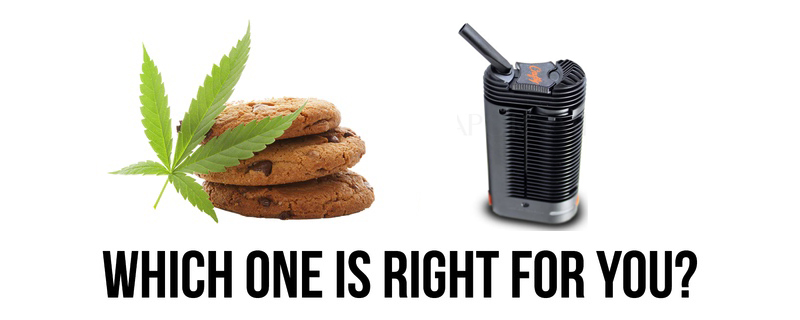With the legalization of medical marijuana throughout much of the United States, many patients find themselves with a number of questions about the drug’s proper use. These patients have probably heard stories about the various ways in which teens and young adults have used cannabis in popular culture, most of which is not grounded in anything resembling medical science.
One of the few things our recreationally inclined friends historically got right is the idea of consumption of cannabis in food products, so-called “edibles.” This method comes with a number of distinct benefits for certain patients, depending on their illness. To learn about the difference between ingesting cannabis and inhaling it, read on.
What Are the Benefits of Medical Marijuana?
Although the medical community at large still has a long ways to go in determining the benefits of medical cannabis for some conditions, it has already been shown to improve outcomes for many patients across the country. The most common use of cannabis is to treat pain. Cannabis has significantly less risk of fatal overdose or addiction compared with opioids. Though less effective for intense sources of pain – surgical wounds, broken bones, etc. – cannabis is quite capable of assisting those with relatively minor chronic pain, and in a much less dangerous form.
There is also mounting evidence that medical marijuana can help those with certain forms of epilepsy. In fact, the only cannabis-derived medication approved by U.S. Food and Drug Administration (FDA), called Epidiolex, is used to treat a rare and severe form of epilepsy.
Additional trials are underway in a number of states to discover and test new uses for marijuana-based treatments. User anecdotes suggests that cannabinoids, the active chemicals in cannabis, can be helpful in the treatment of:
- Tremors caused by Parkinson’s disease
- Nausea produced by chemotherapy
- Chronic pain caused by conditions such as fibromyalgia, endometriosis, or interstitial cystitis
- Spasticity related to multiple sclerosis
Of course, the use of any medication – especially those not explicitly endorsed by the FDA – should only happen with the guidance of a qualified physician. If you are considering cannabis use as a treatment for a medical condition, consult with a Boston medical cannabis doctor who is familiar with its effects.
What is the Difference Between Eating and Smoking Medical Marijuana?
Just as some drugs come in a variety of forms to address different needs – allergy medications, for instance, can be purchased as a pill, a liquid, a nasal spray, or eye drops – so, too, do the different ways of ingesting cannabinoids offer their own advantages.
Perhaps the most important difference between consuming cannabis by inhalation versus orally is the time to onset and duration of action. We never recommend smoking cannabis, as the smoke may be bad for you. We also don’t recommend vaping oils as those too may expose you to toxic chemicals. However, vaporization of whole flower is safe and effective, and is more efficient too (saves money). It starts to work quickly – about 10-15 minutes (but not instantly as some might tell you) – and lasts for a moderate duration of 3-4 hours. This makes smoking cannabis ideal for immediate issues with a shorter duration, such as at the sudden onset of a migraine or nausea.
Cannabis doesn’t take effect nearly as fast when ingested orally, and can be somewhat unpredictable in onset. However, on the plus side, its effects persist for a much longer period of time (8-12 hours). For those with conditions that tend to be continuous – chronic pain, Parkinson’s disease, or some types of insomnia – consuming cannabinoids as an edible is usually the best option. However, binging on brownies or cupcakes, whether they contain cannabinoids or not, is not a healthy option, as it can worsen obesity or diabetes; instead, we always recommend a low-calorie gummy variety.
What Other Forms of Cannabis Are Out There?
Even just a cursory web search of cannabis-based products will turn up more than the oral and inhaled varieties. Tinctures are one fairly common form of the drug; they usually come in a small vial with an eyedropper and people are told to apply them by placing a few drops under the tongue. Though this method has gained something of a following, the truth is that tinctures are generally a very ineffective way to ingest cannabis. At best, tinctures and capsules are only about half as effective as edible cannabis, and topical versions of cannabis-based medications are even more ineffective. Put simply, stick to inhalation or ingestion for the best results.
Consult a Massachusetts Medical Marijuana Healthcare Professional
As more states move to legalize medical marijuana and more research is conducted on the subject, treatments derived from cannabis have shown a great deal of promise. Already the list of those finding relief from this medicine includes the young and the old, the soldier and the civilian. If you would like to learn how medical cannabis can help you, call the Massachusetts medical marijuana doctors at Inhale MD today at (617) 477-8886.

